Kasuga Taisha is Nara’s oldest and most famous shrine, don’t miss this beautiful UNESCO World Heritage Site with thousands of stone and bronze lanterns, and the brilliant vermilion columns surrounded by lush green trees.
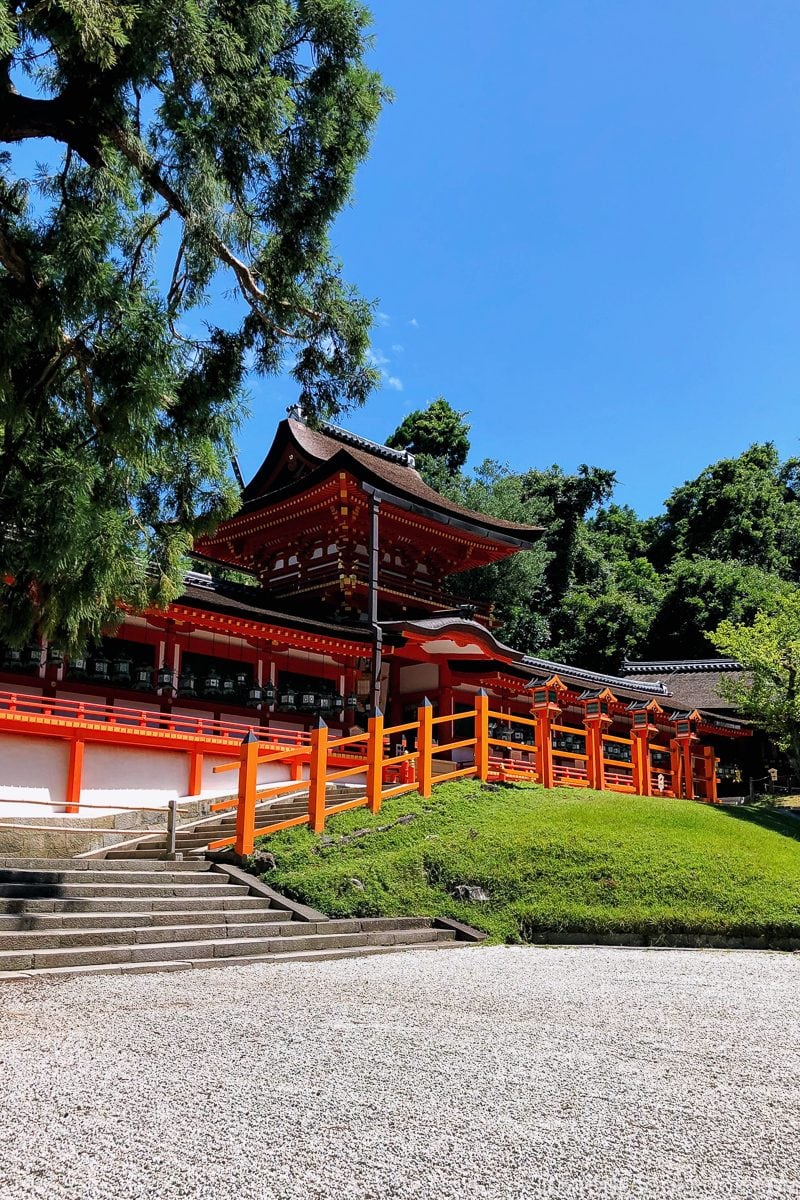
Where is Kasuga Taisha 春日大社
Kasuga Taisha is located on the eastern end of Nara Park not far from Todai-ji and Nara National Museum. You can get to Kasuga Taisha easily on 3 bus routes, the loop bus, bus 77/78, and bus 97/98.
Deer at Kasuga Taisha
As the shrine is located near Nara Park there are many wild deer roaming around nearby. Be respectful (and careful) if you interact with the deer since the Shinto religion considers them messengers to the gods. The deer could be aggressive if you have deer feed or food on you.
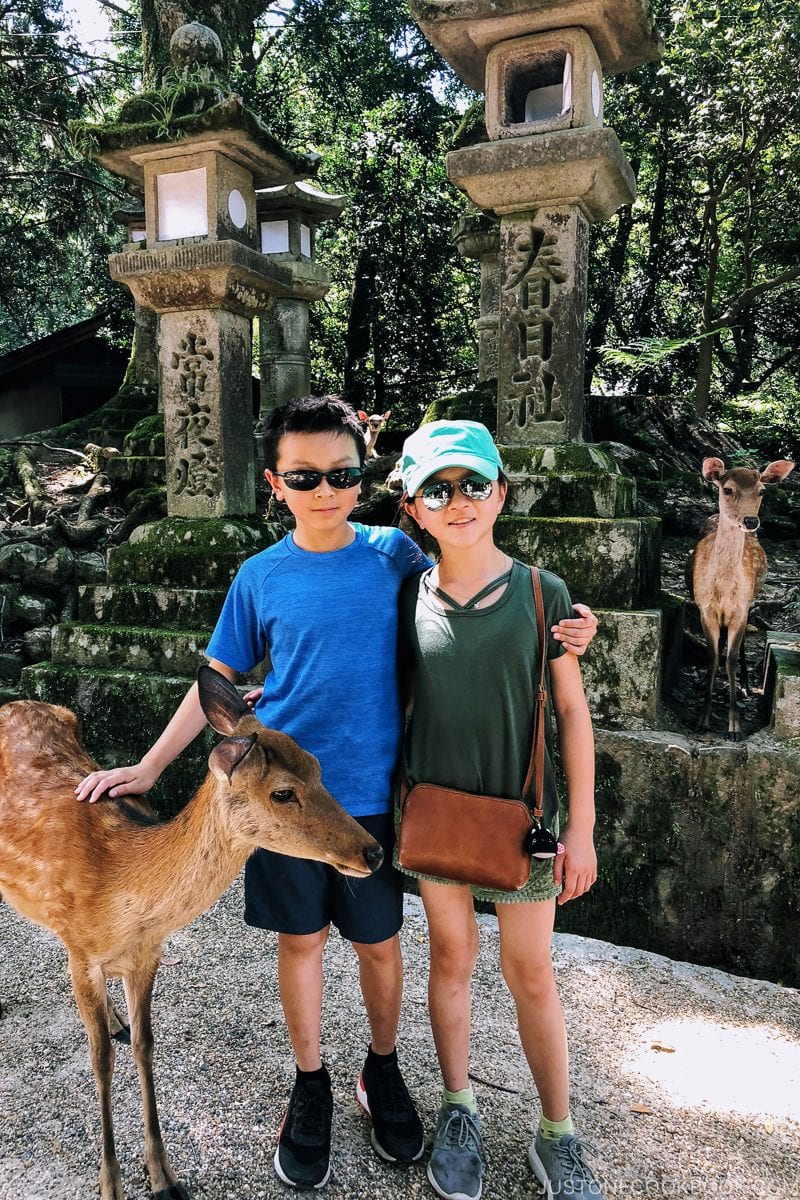
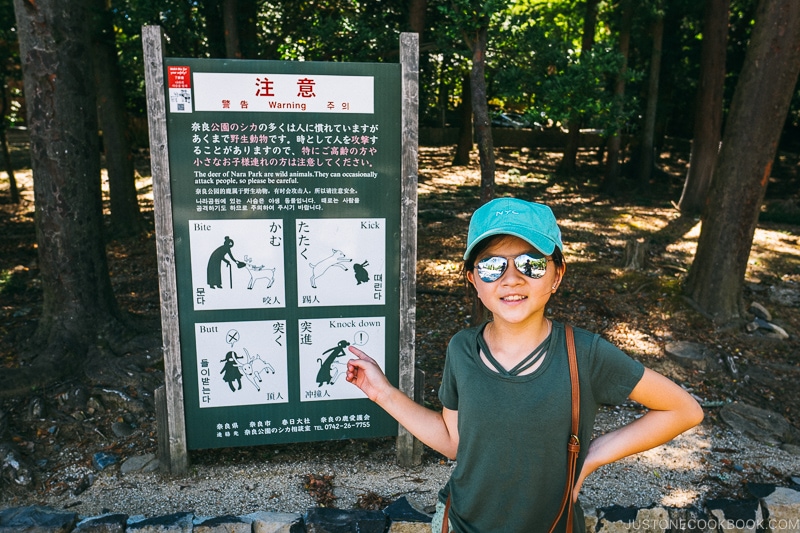
Kasuga Taisha World Heritage Site
Kasuga Taisha and the ancient forest on Mount Kasuga nearby are both recognized as UNESCO World Heritage Site as “Historic Monuments of Ancient Nara“. In the historic monuments, it’s the only Shinto Shrine.
The shrine was built in 768 by the Fujiwara clan, one of the most influential families in Japan from the 7th century to the 11th century. It’s best known for the thousands of stone and bronze lanterns on its grounds, all the way from the entrance to throughout the shrine. The lanterns were donated by worshippers over the years. When we visited, Kasuga Taisha celebrated its 1,250th year.
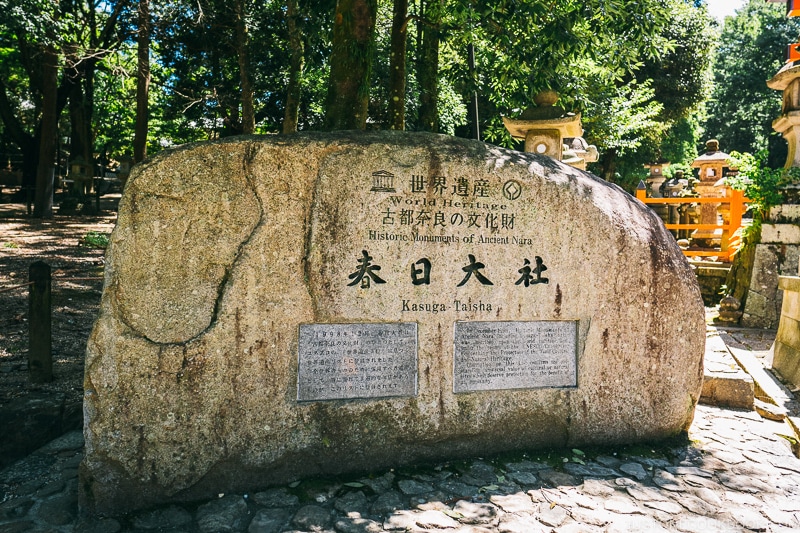
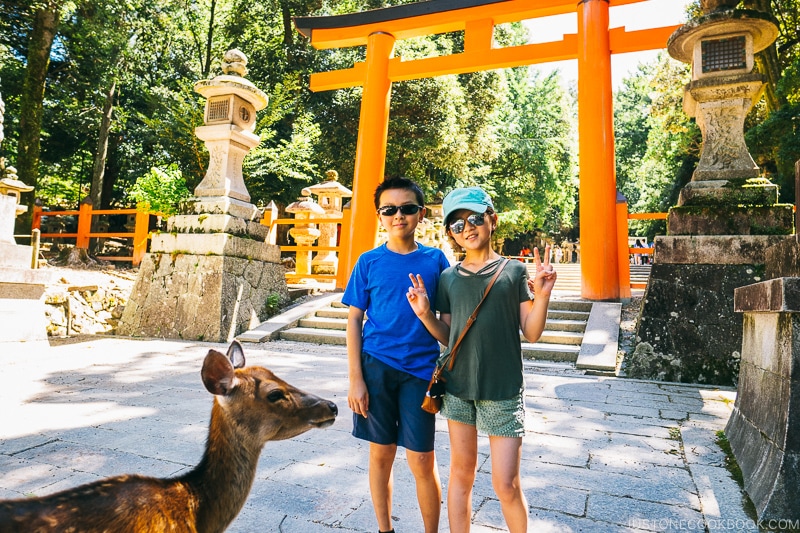
Kasuga Taisha Lanterns
There are over 3,000 stone and bronze lanterns in and near the shrine. The lanterns are only lit twice a year during the Mantoro Festivals (節分万燈籠 and 中元万灯籠) in February and August.
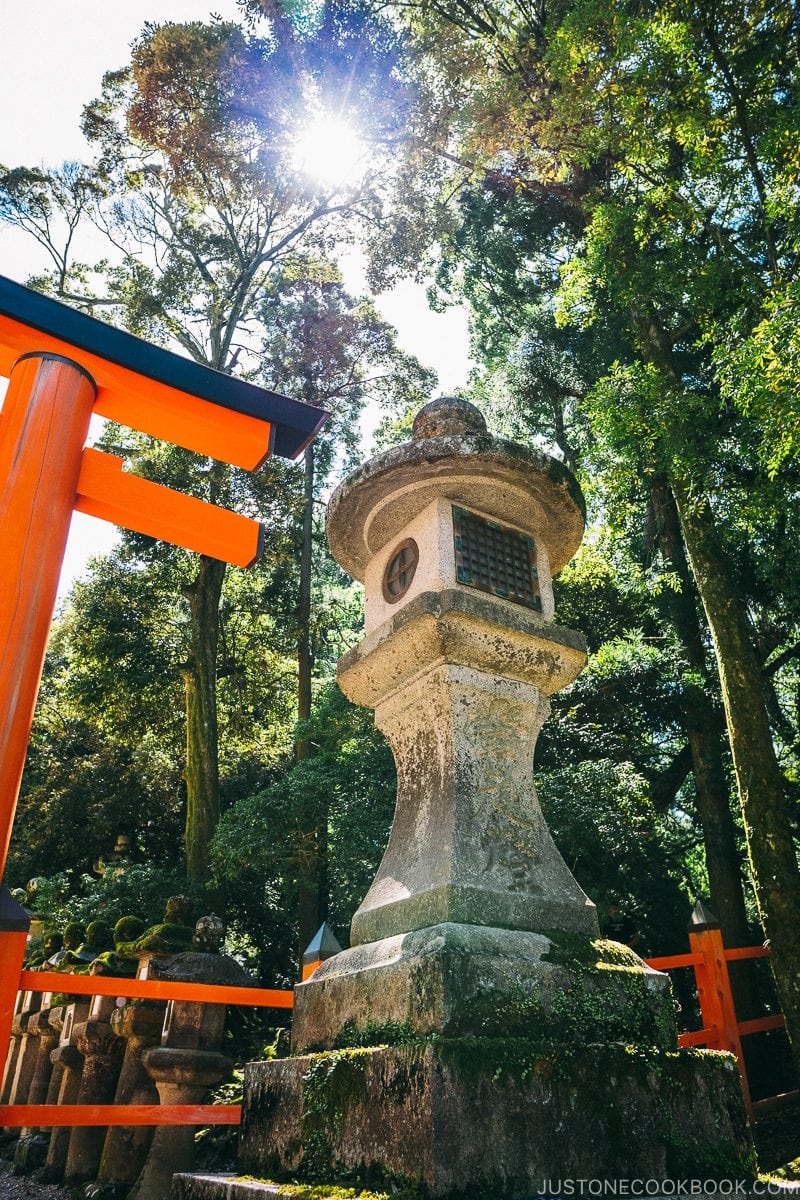
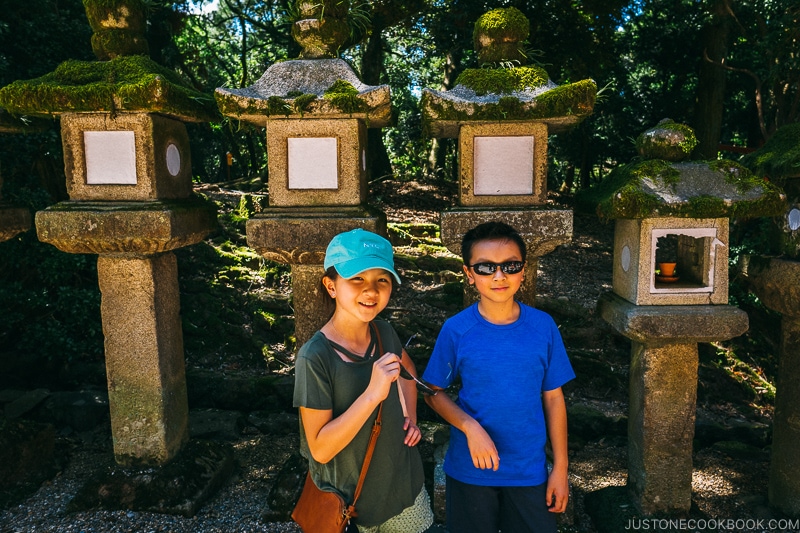
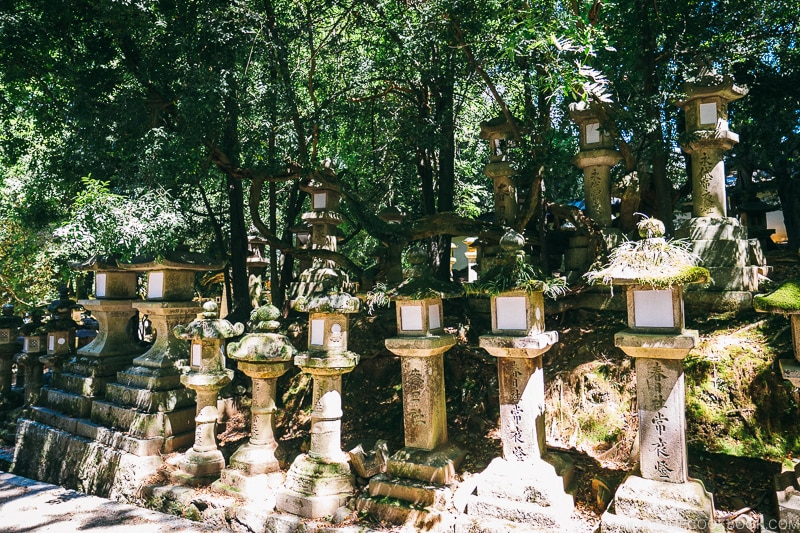
The Shrines at Kasuga Taisha
It is free to walk around the surrounding area, but if you want to enter to see the halls and inner parts of the shrine there is an entrance fee (500 yen).
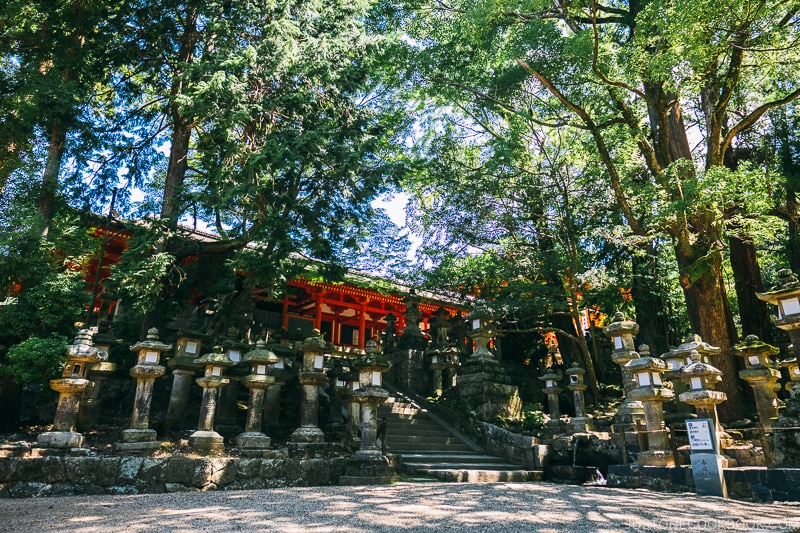
As you get closer to the shrine, you see the vibrant vermilion columns against the white walls and the Kasuga-zukuri architectural style building.
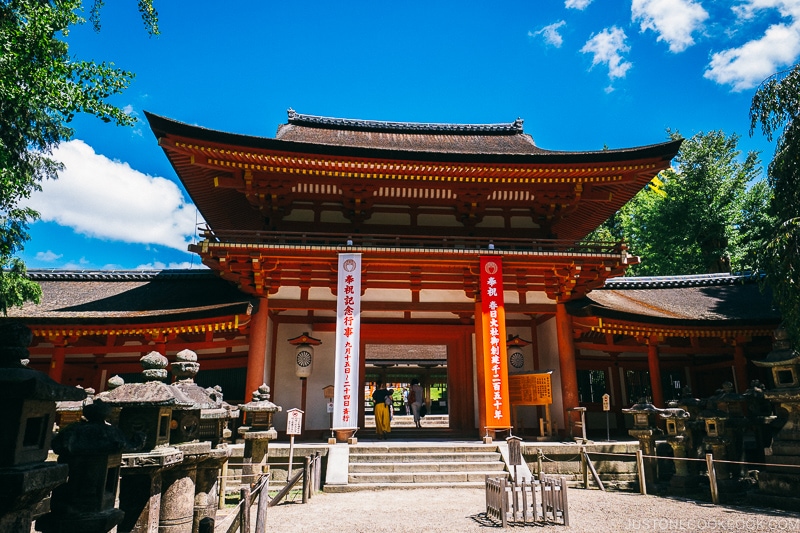
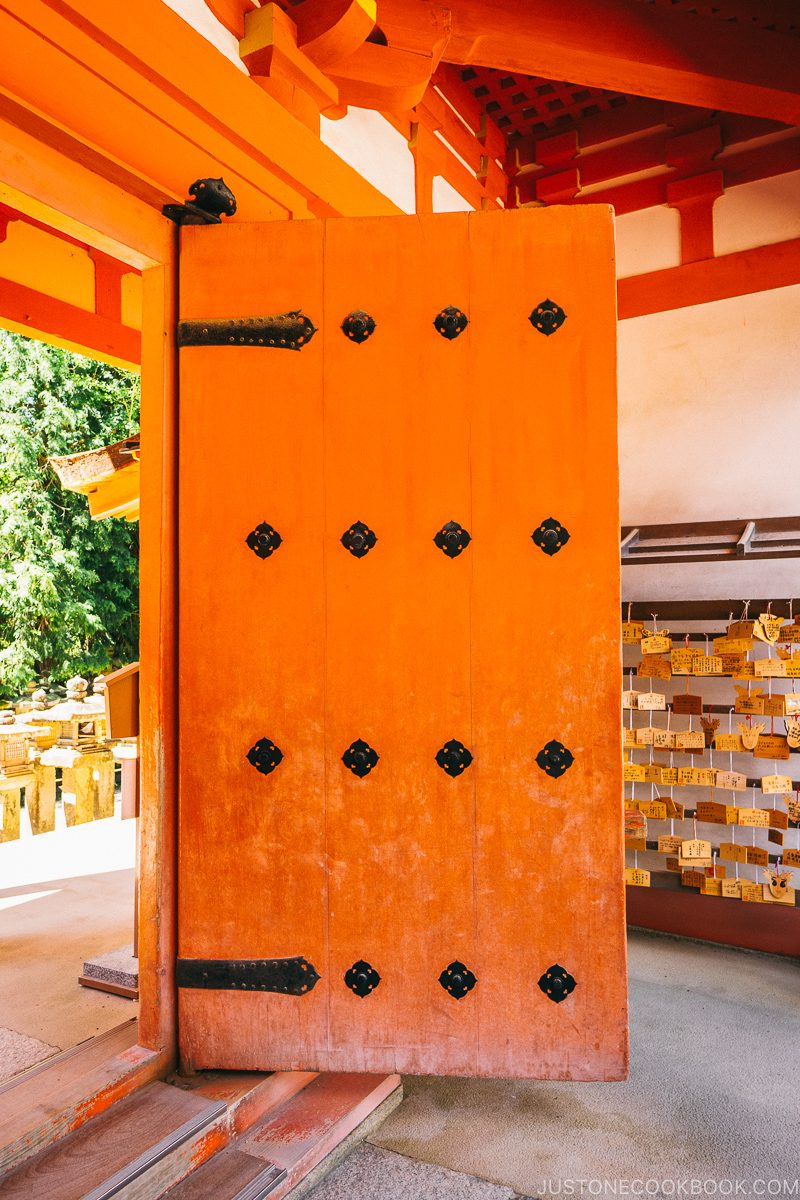
Deities Enshrined at Kasuga Taisha
Established in 768, there are four deities enshrined at Kasuga Taisha which is fairly unique in Japan (usually 1 or 2). Each deity is worshipped their own altar in the main sanctuary area. The shrine is still worshipped today and more than 2,2000 rituals are conducted annually at the shrine including daily morning and evening rites. The rituals are held to pray for Japan and global peace, and happiness of all people.
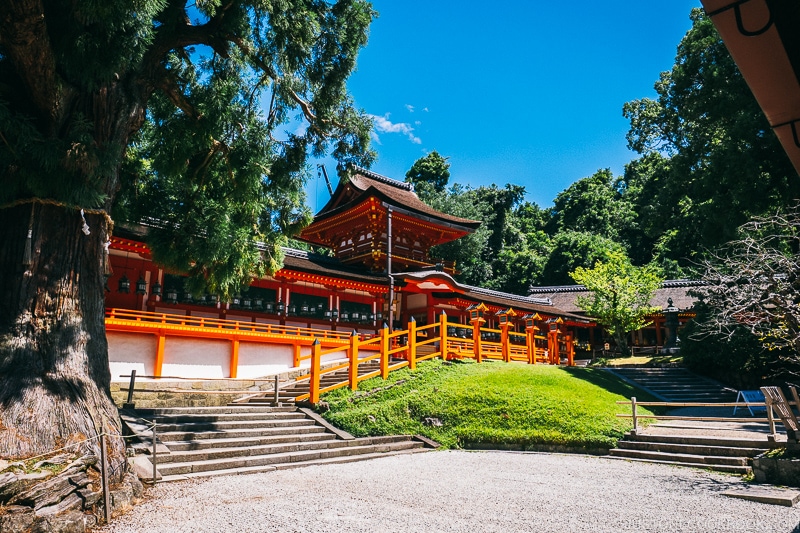
The grounds at Kasuga Taisha are not exceptionally large so it doesn’t take long to finish (roughly 1 hour) to walk around.
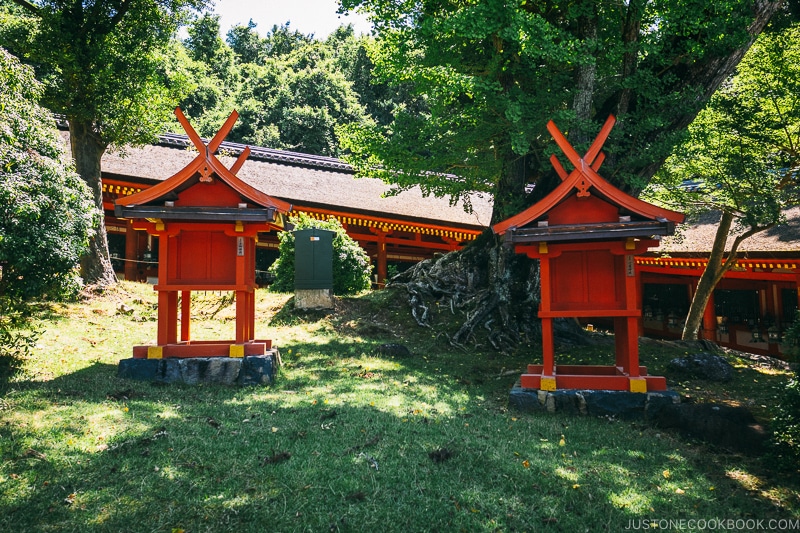
As you tour the courtyard, you will start off at the grand Chumon (center gate) and the halls that extend to the east and west. The main sanctuary is behind the Chumon and it was closed to the visitors when we visited (not sure if it’s allowed for visitors to enter).
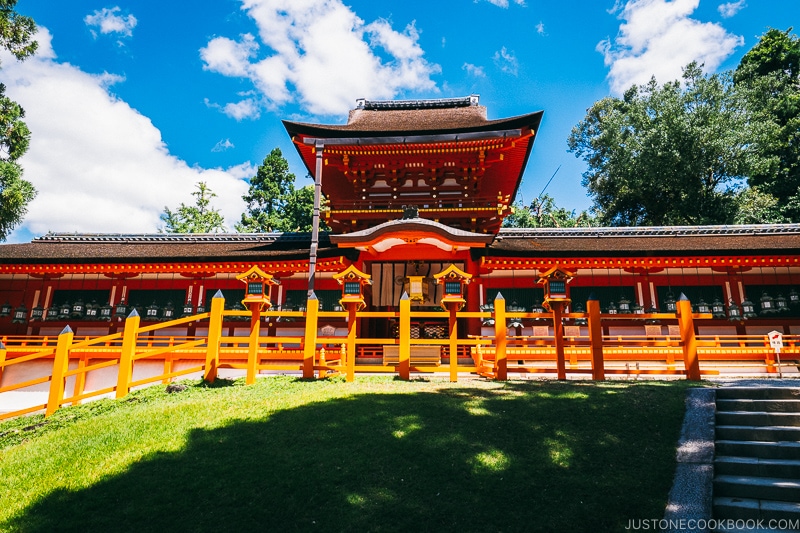
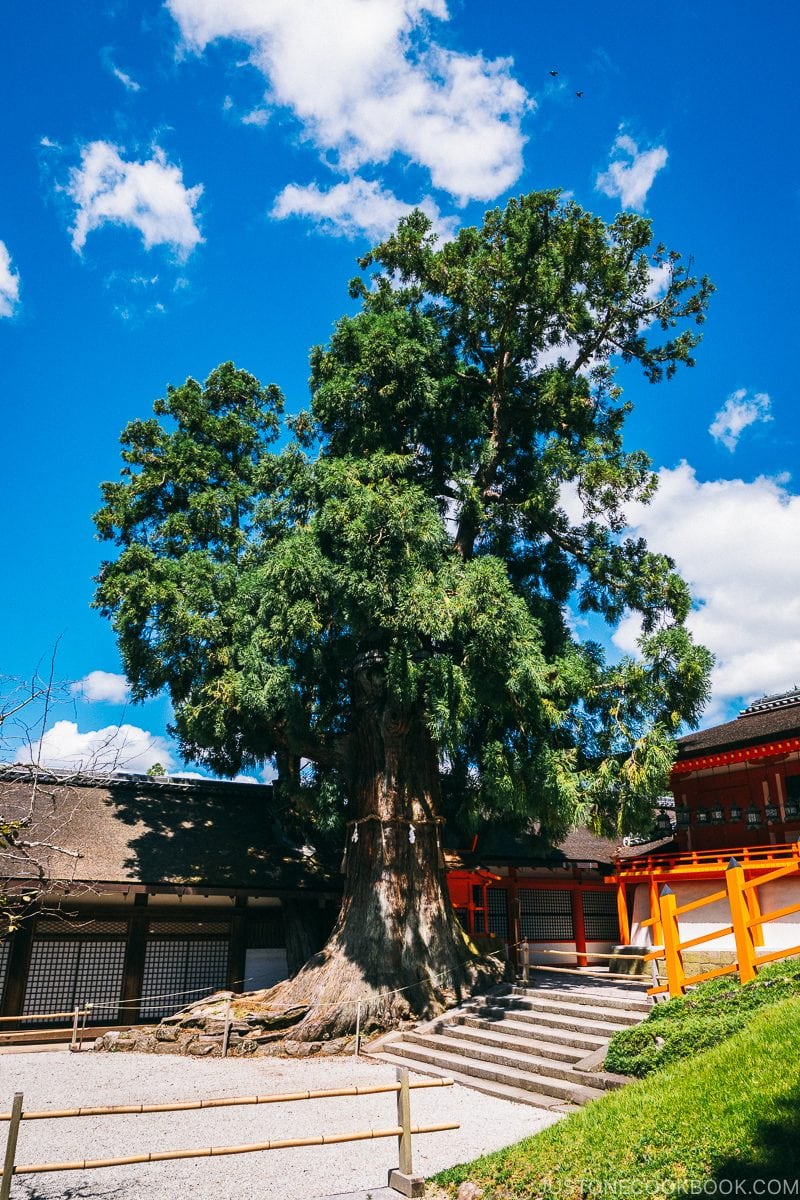
The halls supported by the vermilion columns are decorated with the signature bronze lanterns hanging from the rafters.
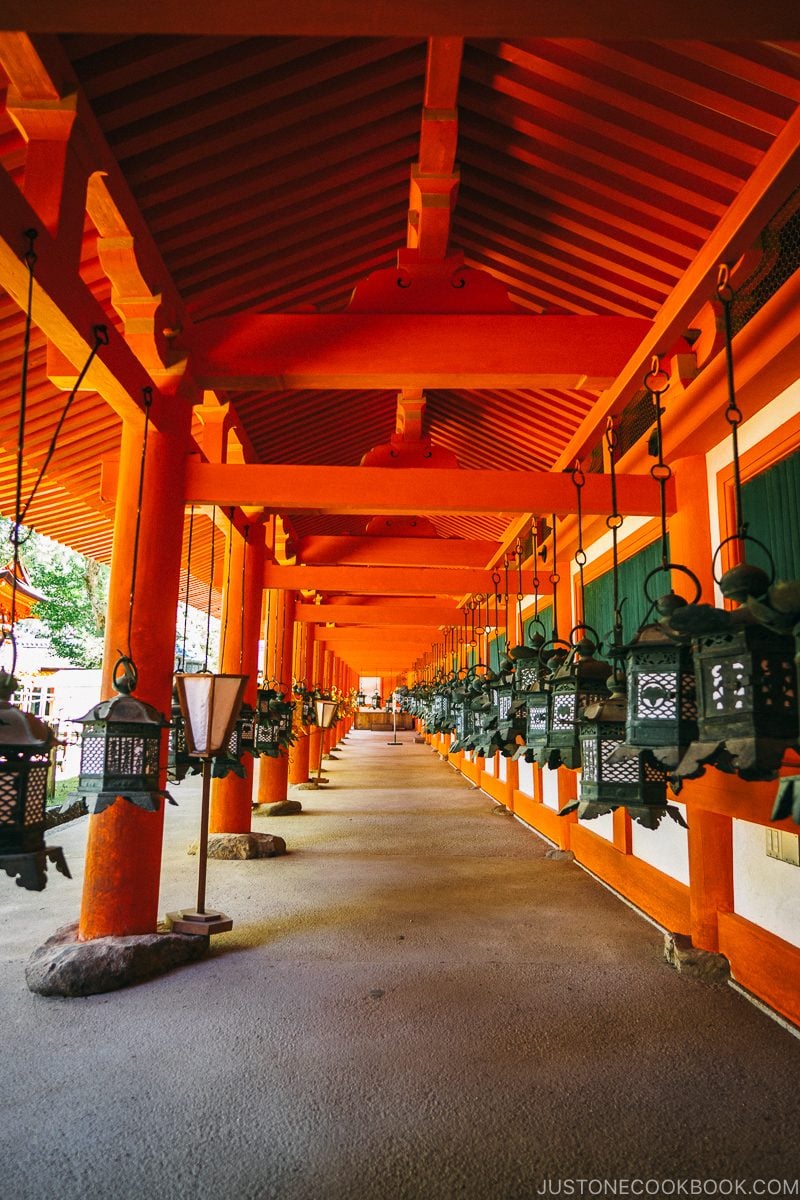
Although the lanterns are only lit twice a year, Fujinami-no-ya Hall on the west side of the shrine is open to the public and has many lit lanterns inside. It lets visitors get a feel what it’s like during the Mantoro festivals with thousands of lit lanterns.
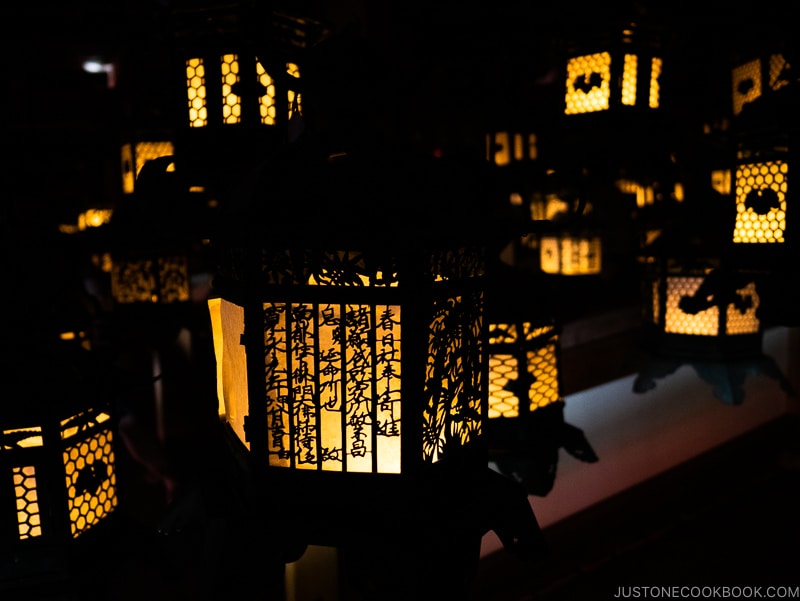
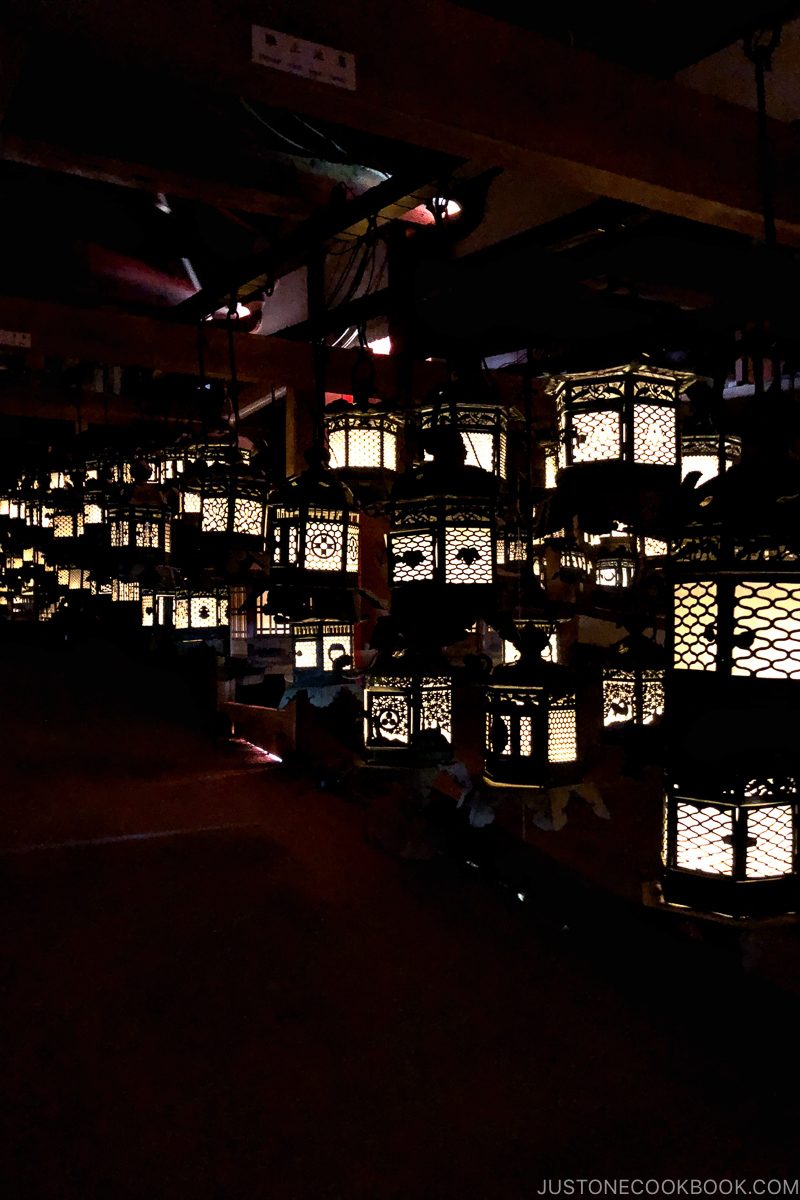
Even though the shrine has been there since 786, the current building is from around 1863. Prior to that, the building was rebuilt every 20 years based on the Shinto custom.
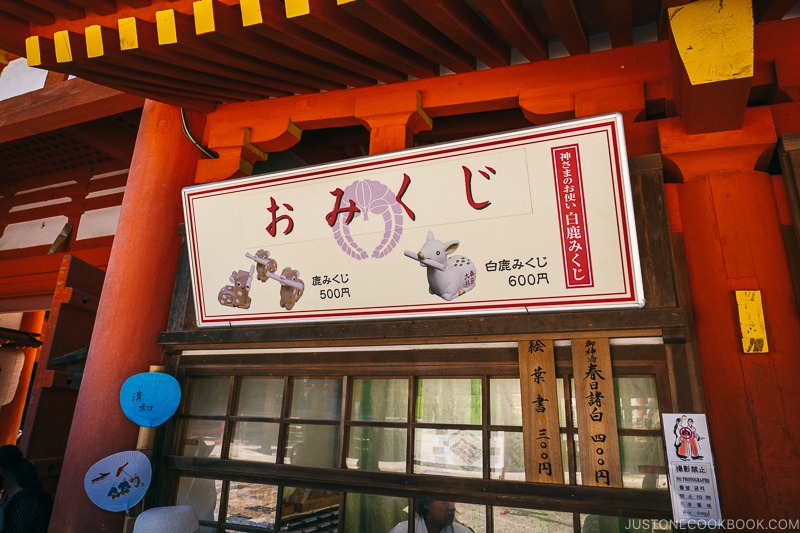
Around Kasuga Taisha
Around Kasuga Taisha, you can walk around stone paths to many other surrounding shrines such as the Wakamiya Shrine.
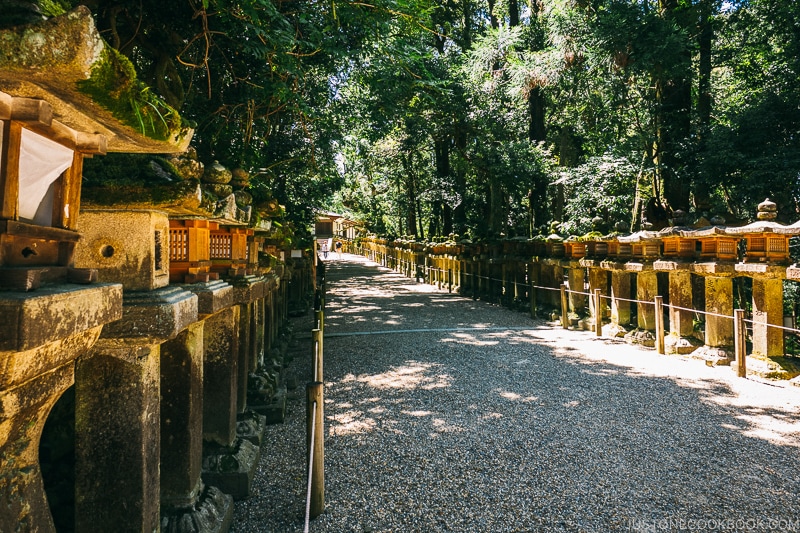
There is also the Kasugataisha Museum (additional fee required) which has thousands of cultural assets and national treasures on display for visitors to check out.
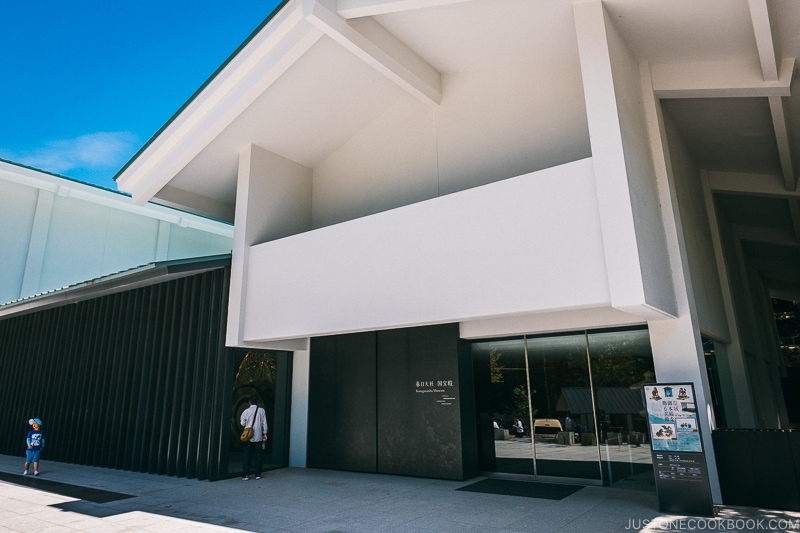
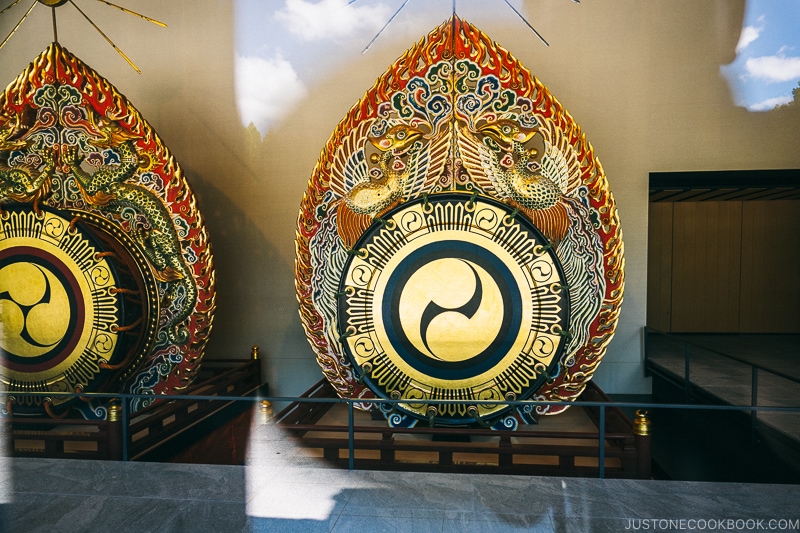
Lastly, there is a small souvenir shop (Kaoh) where we stopped by for some green tea soft serve. It was a great way to cool down on a hot day.
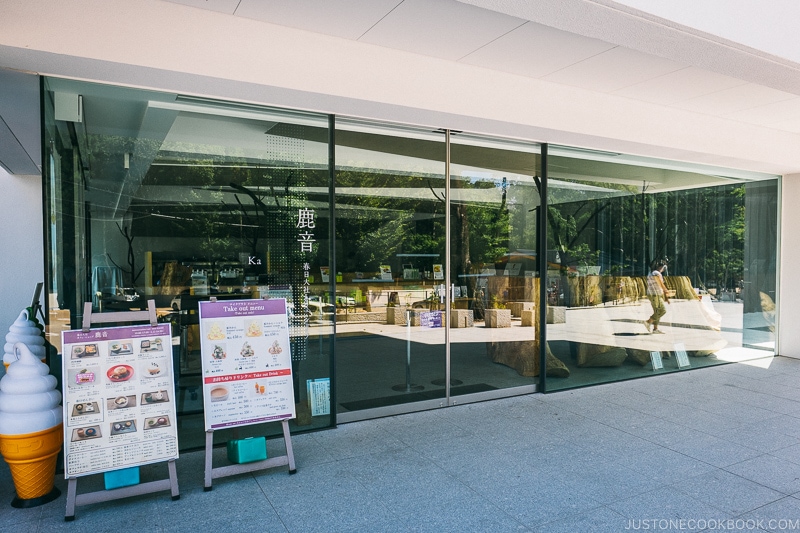
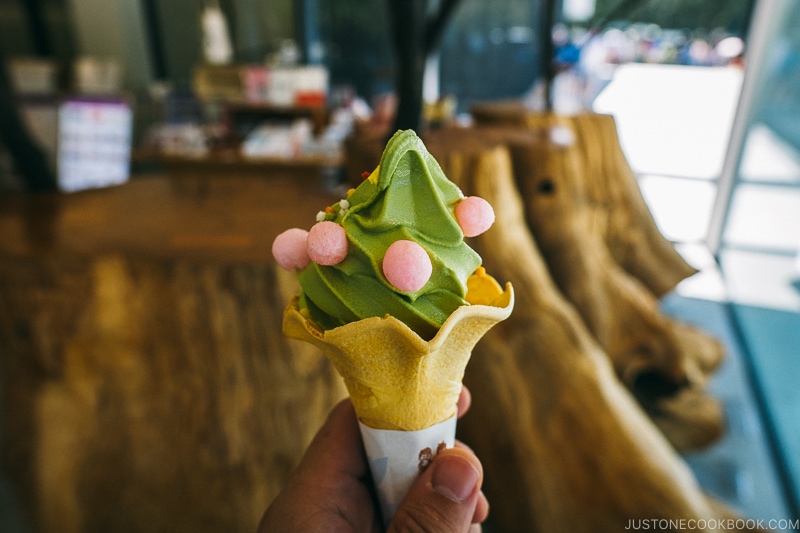
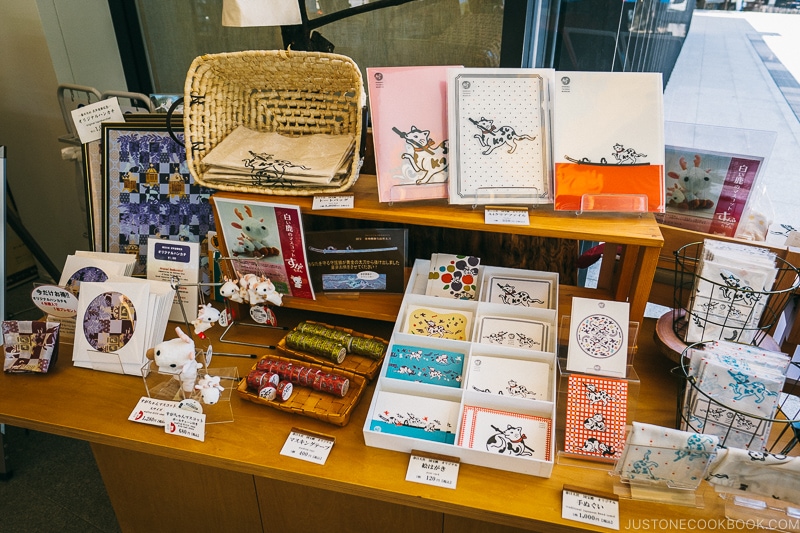
Thank you for reading our Nara Guide for Kasuga Taisha. We’ll be sharing more travel guides on Nara so stay tuned. If you are interested in unique Shinto shrines, don’t miss our post on Itsukushima Shrine 厳島神社 and it’s world-famous Torri gate.
If you are interested in traveling in Japan, check out our adventures in the Japan Travel Guide section.



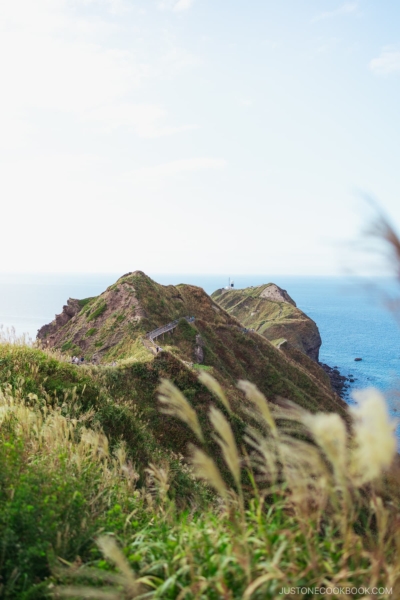
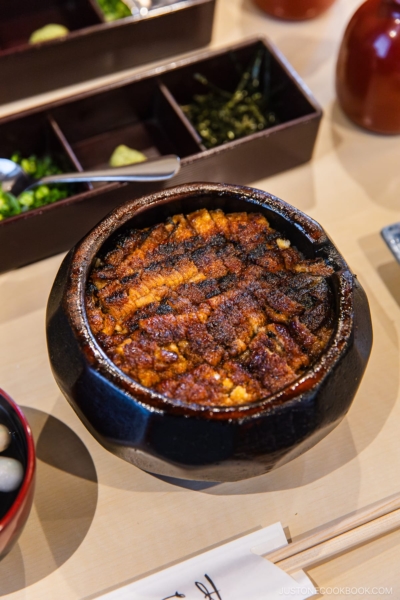





Hi Nami,
My name is Francine, a retiree living in Montreal, Canada. I’ve been following your posts and recipes many years now via email. I really enjoy them. As we (5) will visit Japan in April, I have a question for you regarding `’tipping’. We are very fortunate to have 2 Goodwill guides offering us as free guide for a day in Tokyo and Kyoto. They refuse any compensation for their time spent except the transportation, the lunch and admission fees. They’re so warm and enthusiastic that we feel a bit embarrassing. Will they feel offended if we bring them a small gift from Canada ?? Please advise as we are not familiar with Japanese etiquette.
Thank you so much, hope to hear from you before we leave.
Francine
Hi Francine! Thank you so much for following my blog and newsletter! I think a small gift from Canada and your kind thoughts will be much appreciated. I think it would be nice to share something from your home (country) and talk about it. In Japan, it’s always nice to bring a small gift when visiting someone (in another word, we don’t visit with empty hand), so I think your idea is wonderful. 🙂 Have a wonderful trip to Japan!
Thanks Nami, we’re leaving in 4 days to Japan for 26 days and enjoy very much reading your various travel posts. Francine
Oh Nara! <3 One of my absolute favorite places we went on our trip to Japan! Thanks for posting such gorgeous photos (with equally adorable kids!).
Hi Kayla,
Thank you for stopping by to read about Nara. We had a great time there as well. Even though it’s close to Kyoto, the vibe and scenery were quite different.